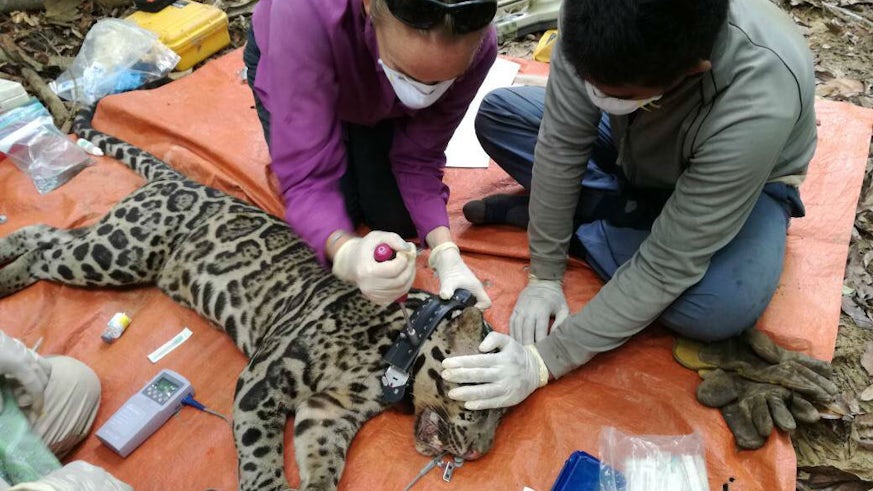Sunda clouded leopard under threat from habitat fragmentation
7 February 2019

The Sunda clouded leopard in Sabah, Malaysia, is under threat from habitat fragmentation and a lack of forest connectivity, finds a study by Cardiff University and the Danau Girang Field Centre.
In collaboration with Oxford University’s WildCRU, the US Forest Service, and Sabah Wildlife Department, the team used a combination of field data and simulation modelling to map patterns of population connectivity for the clouded leopard species across Sabah. They found that isolated forest patches and areas of reduced forest cover could jeopardise the dispersal of individual clouded leopards and limit gene flow, which in turn could endanger the long-term future of the species.
Dr Andrew Hearn, from WildCRU, who led the study said: “Sabah is a stronghold for the Sunda clouded leopard in Borneo, yet this rarely seen animal is found at very low population densities, typically as few as 1-5 animals for every 100 square kilometres of forest. Such rarity, coupled with the fact that their forest home is shrinking and becoming increasingly isolated, may expose these beautiful cats to the negative effects of population isolation, as individual animals struggle to disperse across the landscape.”
Dr Benoit Goossens, Director of the Danau Girang Field Centre and Reader at Cardiff University, added: “We mapped patterns of population connectivity for the species across Sabah and concluded there are several forest patches where the clouded leopard population may be isolated, which in turn jeopardises the dispersal of individuals and limits gene flow.
“We also identified the Lower Kinabatangan Wildlife Sanctuary, Tabin Wildlife Reserve and Tawau Hills Park as patches of habitat predicted to have existing clouded leopard populations that are isolated from other populations. In light of this, we recommend that efforts are made to explore mechanisms to increase connectivity between these areas and the main central forest, such as establishment of riparian corridors, and identification and/or creation of High Conservation Value forest areas within plantation landscapes.
“These recommendations were included in the Sunda Clouded Leopard Action Plan for Sabah, which we hope to see tabled at the next State Cabinet meeting.”
Professor David Macdonald, Director of the WildCRU added, “This work involved gruelling fieldwork and elegant analyses and is a major step towards understanding one of the least known and most beautiful wild cats in the world.”
Share this story
Explore study options including field courses, postgraduate courses or a professional training year.




